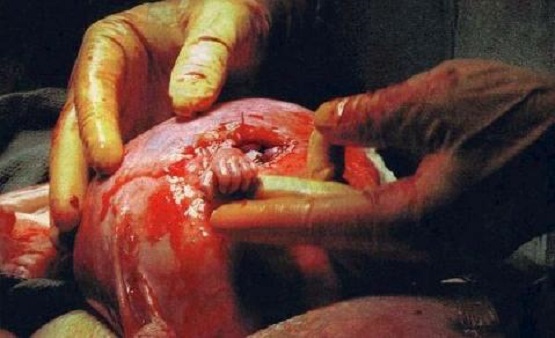Most everyone in the pro-life movement is familiar with the photo of Samuel Armas clasping a doctor’s finger. That picture, taken during an in-utero surgery at a hospital at Vanderbilt University, received nationwide attention.
 The photo was so inspiring that members of Congress brought it up during a hearing when a Senate committee hearing exploring the scientific and medical advances of surgery on unborn children.
The photo was so inspiring that members of Congress brought it up during a hearing when a Senate committee hearing exploring the scientific and medical advances of surgery on unborn children.
“Have you seen this picture of you?” then-Senator Sam Brownback asked Samuel.
“They fixed my boo-boo,” he replied.
Samuel had been diagnosed with spina bifida just weeks into the pregnancy. His parents, Julie and Alex Armas, chose to try a relatively new procedure aimed at reducing the effects of spina bifida. The operation was performed just 21 weeks after conception.
Now, researchers are developing a robot hand that could operate on a baby in the womb. Funded by the Wellcome Trust and Engineering and Physical Science Research Council, the work is being carried out by University College London and KU Leuven and it could be used to treat spina bifida and other congenital conditions.
Here is more on this exciting advancement:
The £10 million project aims to create a surgical robot hand which could allow a foetus with a congenital condition to have surgery while still in the womb.
Researchers hope to develop a pincer, with a miniature camera, which could be inserted into the mother’s womb.
They hope it would then be able to insert patches over the gaps in the spine to treat the condition.
The instrument they aim to create will have 3D endoscopic imaging, which will give surgeons accurate detail of the foetus.
Professor Sebastien Ourselin told the Observer: ‘It will be like a plaster. If we can do that, there will massive gain for the foetus while there will be little risk to the mother.
‘We are still in the design stage, so we could end up with a device with four or five arms in the end. Nor would it be used merely to put in patches. It could carry out delicate surgery or deliver stem cells to damaged organs.’
The condition spina bifida is caused during the first month of the embryo’s development.
Symptoms of the condition can include learning difficulties, paralysis of the lower limbs and incontinence.
Click here to sign up for daily pro-life news alerts from LifeNews.com







